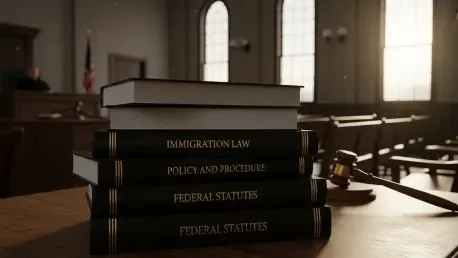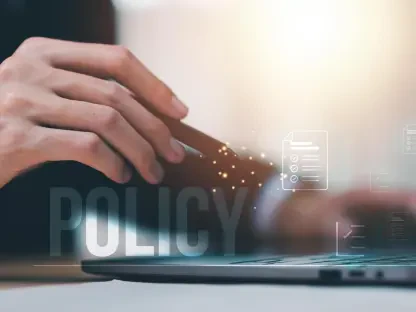Today, we’re thrilled to sit down with Desiree Sainthrope, a legal expert with a wealth of experience in drafting and analyzing trade agreements. With her deep knowledge of global compliance and keen interest in areas like intellectual property and emerging technologies such as AI, Desiree brings a unique perspective to the complex world of immigration law and policy. In this interview, we’ll explore the political dimensions of immigration strategies, the impact of enforcement tactics on communities, the evolving challenges faced by universities, and the broader societal implications of current immigration narratives. Let’s dive into a conversation that promises to shed light on these critical issues.
Can you share your perspective on how immigration policies often serve as part of a larger political strategy rather than just standalone legal changes?
Absolutely. Immigration policies are rarely just about the law; they’re often a vehicle for broader political messaging and power dynamics. They can be used to shape public perception, define national identity, and rally specific voter bases by tapping into cultural or economic anxieties. For instance, aggressive deportation campaigns or restrictions on citizenship aren’t always about the practical outcomes—they’re often symbolic, signaling a particular vision of who belongs in a society. This approach can overshadow the actual policy details and focus on creating a narrative that resonates emotionally with certain groups, even if the initiatives face legal challenges or fail to achieve their stated goals.
How do you see the intensity and focus of immigration enforcement differing between administrations or even within different terms of the same leadership?
There’s often a noticeable shift when an administration doubles down on its priorities, especially in a second term. You might see a more disciplined and coordinated effort, with key advisors or hardline figures driving the agenda without the internal pushback that might have existed earlier. In the past, some administrations faced resistance from traditional voices within their own ranks—concerns about economic impacts or humanitarian fallout could temper extreme measures. When those restraints disappear, the result is often a more aggressive rollout of policies, with a focus on maximizing impact through enforcement or messaging, even if it means bypassing due process or ignoring long-term consequences.
What role does messaging play in immigration policy, and how does it sometimes outweigh the actual legal outcomes of these initiatives?
Messaging is often as critical as the policy itself—it’s about shaping perceptions and setting a tone. Take something like a push to limit birthright citizenship: even if it’s unlikely to survive a court challenge, the proposal sends a powerful signal to supporters about who is considered a “true” citizen. It creates a cultural divide, reinforcing a narrative of exclusion. For immigrant communities, this kind of rhetoric can be deeply unsettling, fostering fear and uncertainty regardless of whether the policy becomes law. It’s a way to influence public opinion and behavior without necessarily changing the legal landscape, and it often has a chilling effect on how people live their daily lives.
Can you walk us through how mass deportation campaigns impact immigrant communities beyond just the act of removal?
Mass deportations are designed to do more than remove individuals—they’re meant to instill fear and disrupt entire communities. The anxiety and terror they create ripple through families, workplaces, and neighborhoods. People start living in the shadows, avoiding public spaces or even routine interactions like taking kids to school, out of fear of being targeted. Tactics like racial profiling or sweeping enforcement actions in specific areas amplify this effect, making everyone feel vulnerable, even those with legal status. It’s not just about numbers; it’s about creating an environment where trust erodes, and people feel they’re under constant threat, which can have profound psychological and social impacts.
How does the reality of undocumented immigration—such as many people overstaying lawful entries rather than crossing borders illegally—challenge the dominant public narrative?
The common narrative around undocumented immigration often fixates on unauthorized border crossings, painting a very specific and narrow picture. But a significant portion of undocumented individuals actually entered legally and overstayed visas due to various reasons—economic needs, family ties, or bureaucratic hurdles. This reality complicates the simplistic “secure the border” storyline because it shifts the focus to systemic issues like visa processes and labor policies. Unfortunately, the public’s attention stays on border imagery because it’s more visually dramatic and easier to politicize, which in turn shapes enforcement to prioritize visible crackdowns over addressing root causes like overstays.
Why do you think policies are increasingly targeting individuals with lawful status, such as those with Temporary Protected Status, and what are the broader implications?
Targeting people with lawful status, like those under Temporary Protected Status, often serves a strategic purpose—it’s a way to inflate deportation numbers and demonstrate a tough stance on immigration. Removing protections from hundreds of thousands of people who’ve built lives here, often fleeing dire circumstances in their home countries, sends a clear message of exclusion. For these individuals and their families, it means sudden upheaval—loss of work, homes, and community ties. More broadly, it fits into a goal of redefining legal presence as conditional, making even those with status feel precarious and reinforcing a narrative that immigration itself is a problem to be solved through removal.
What kind of damage are current immigration policies inflicting on universities, and how does this affect the broader educational and economic landscape?
Immigration policies that restrict international students—through visa denials or tightened regulations—are causing significant harm to universities. These students contribute immensely, not just through tuition but also by filling critical roles like teaching assistants and spending money in local economies. When they’re denied entry or face barriers to completing degrees and securing jobs, universities lose talent and revenue, which can strain budgets and reduce program offerings. Beyond that, it signals a rejection of global exchange and innovation, diminishing the U.S. as a hub for higher education. The ripple effect is economic and cultural, as we lose the diversity of ideas and skills that these students bring.
Looking ahead, what is your forecast for the future of immigration policy and its societal impact in the coming years?
I think we’re at a crossroads where immigration policy will continue to be a lightning rod for broader societal tensions—economic inequality, cultural identity, and political polarization will keep driving the debate. If current trends persist, we might see even more restrictive measures, with an emphasis on enforcement over reform, which could deepen divisions and further marginalize immigrant communities. However, there’s also potential for pushback—grassroots movements, legal challenges, and economic realities might force a reckoning on issues like labor needs and humanitarian obligations. The key will be whether policymakers can shift from using immigration as a political weapon to addressing it as a complex, human issue that requires balanced, ethical solutions.









